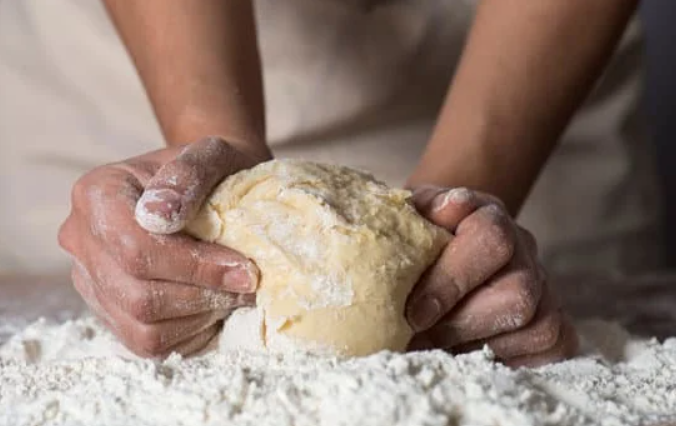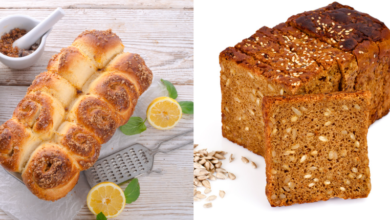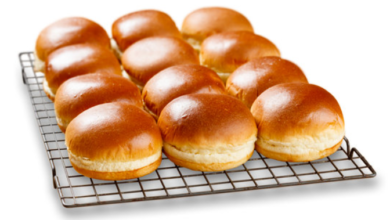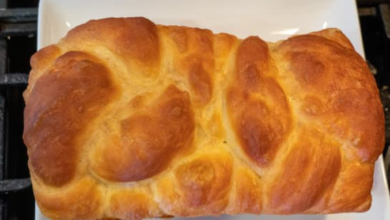Kneading Brioche by Hand: How Long Does it Take?

What To Know
- Achieving this culinary masterpiece requires diligent kneading, a process that transforms the dough from a sticky mass into a supple and elastic masterpiece.
- By understanding the dough, employing efficient techniques, and avoiding common pitfalls, you can master the art of brioche kneading and create delectable pastries that will impress your taste buds and loved ones.
- It should pass the windowpane test, which involves stretching a small piece of dough into a thin sheet that allows you to see through it.
Brioche, the epitome of French pastry, is renowned for its rich, buttery, and tender crumb. Achieving this culinary masterpiece requires diligent kneading, a process that transforms the dough from a sticky mass into a supple and elastic masterpiece. But how long does it take to knead brioche by hand?
Understanding the Brioche Dough
Brioche dough is a high-hydration dough, meaning it contains a significant amount of liquid relative to flour. This high hydration contributes to the dough’s softness and richness but also makes it more challenging to knead.
The Kneading Process
Kneading brioche by hand involves a series of rhythmic motions that work the dough, developing gluten strands and incorporating air. These strands form a network that gives the bread its structure and elasticity.
Kneading Time
The time it takes to knead brioche by hand depends on several factors:
- Dough size: A larger dough will require more kneading time.
- Desired consistency: A softer, more pliable dough will require longer kneading.
- Kneading technique: Efficient kneading techniques will reduce the time required.
Step-by-Step Kneading Guide
To knead brioche by hand, follow these steps:
1. Rest the dough: Allow the dough to rest for 15-20 minutes after mixing. This will relax the gluten and make it easier to knead.
2. Flour the surface: Sprinkle flour on a clean work surface.
3. Turn out the dough: Place the dough on the floured surface and dust the top with flour.
4. Fold and press: Fold the dough over itself and press down with the palm of your hand.
5. Stretch and pull: Stretch the dough away from you and then pull it back towards you.
6. Rotate and repeat: Rotate the dough 90 degrees and repeat steps 4 and 5.
7. Check the consistency: Continue kneading until the dough becomes smooth, elastic, and no longer sticky.
Kneading Time Estimates
- Small dough (500g): 10-15 minutes
- Medium dough (750g): 15-20 minutes
- Large dough (1kg): 20-25 minutes
Tips for Efficient Kneading
- Use the heel of your hand: Apply pressure with the heel of your hand to develop gluten strands effectively.
- Knead in short bursts: Avoid overworking the dough. Knead for a few minutes, then rest it for a few minutes.
- Use a bench scraper: A bench scraper can be used to fold and shape the dough easily.
- Be patient: Kneading brioche takes time and effort. Don’t rush the process.
Signs of Overkneading
Overkneading brioche can result in a tough, dense loaf. Look for these signs:
- The dough becomes dry and crumbly.
- The dough tears easily.
- The dough becomes difficult to shape.
Troubleshooting Common Kneading Issues
- Sticky dough: Add a little more flour, but be careful not to overflour.
- Dry dough: Add a little more liquid, but be careful not to overhydrate.
- Dough that tears easily: Knead the dough more gently.
- Dough that doesn’t rise: Check the yeast and make sure it’s active.
Conclusion: Mastering the Brioche Knead
Kneading brioche by hand is a skill that takes practice and patience. By understanding the dough, employing efficient techniques, and avoiding common pitfalls, you can master the art of brioche kneading and create delectable pastries that will impress your taste buds and loved ones.
FAQ
Q: Can I use a stand mixer to knead brioche?
A: Yes, but be careful not to overmix. Use the dough hook attachment and knead on low speed for 5-7 minutes.
Q: How do I know when the brioche dough is kneaded enough?
A: The dough should be smooth, elastic, and no longer sticky. It should pass the windowpane test, which involves stretching a small piece of dough into a thin sheet that allows you to see through it.
Q: What if I don’t have time to knead the dough by hand?
A: You can use a stand mixer or a bread machine. However, hand-kneaded brioche typically has a better texture and flavor.



